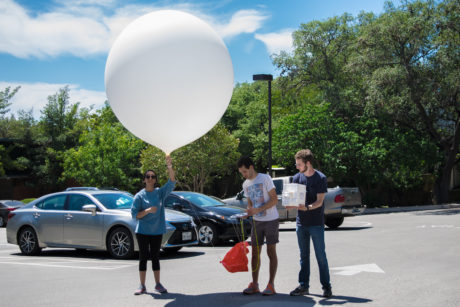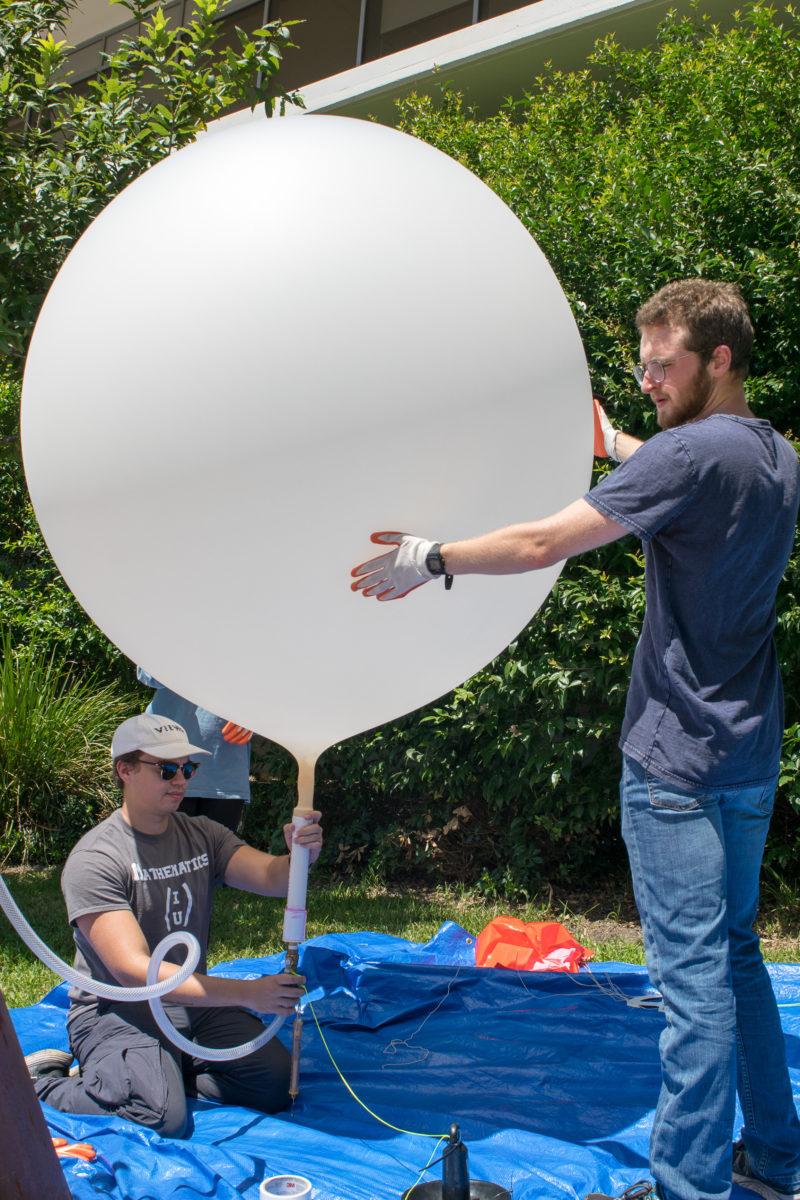If you’ve seen giant balloons floating into the sky on the weekends and thought you were hallucinating, your eyes haven’t deceived you “” it’s just the chemistry department’s latest project.
Funded by the Texas Commission on Environmental Quality, or TCEQ for short, the Tropospheric Ozone Pollution Project was founded by Gary Morris in mid-2004, and involves collecting measurements of atmospheric ozone above metropolitan areas using helium-filled balloons. Data has been collected from other cities, including Houston, El Paso and Austin. Now it’s San Antonio’s turn.
“Dr. Wooten and I are co-sponsors of the Trinity Ballooning Project. We received a sub-contract award from St. Edward’s from Dr. Morris to participate over the summer and into the fall. We’re trying to have about 30 launches over the two-and-a-half month time span to get the data for our local environment,” said Leslie Bleamaster, the science facilities manager for the Center for Sciences and Innovations and adjunct geosciences professor.
After checking the ozone predictions for the day, and depending on how high the ozone levels are predicted to be, students will launch the balloon into the atmosphere and collect data while the balloon is ascending and also after the balloon pops and the monitor is falling back to the ground.

“We normally stick to Friday, Saturday and Sunday to launch the balloons, when there’s not a lot of traffic and not a lot of people out and about. The balloon pops and then the whole thing comes down,” said Huda Syed, a senior biology major. “It could land anywhere, from someone’s backyard to a field somewhere. If someone finds it, there’s a number on the box to call, and it also says, “˜Reward: This is not dangerous.’ The device is beeping, so people do get freaked out, but if you call the number, you get a $50 reward for returning it to us.”
Though the launch itself takes only a few minutes, all the equipment must be tested during the preparation phase, which takes place inside the labs.
“We use helium tanks to fill up the balloons, so that takes a little bit of time, and setup takes a little bit of time. Over here in the lab, we’re testing the battery of the ozone [sonar device], whether or not the radio is transmitting frequency and data to us and the frequency of the ozone [sonar device] too,” Syed said.
The ozone sonar and radio sonar devices are linked to each other via a microprocessor, and the data is immediately transmitted to the computers at Trinity.
“The radio sonar on there transmits the data in real time to our computers, and that’s all we actually need, so we don’t have to be able to recover the box,” said Zachary Wooten, who graduated this spring with a degree in mathematics. “But it’s very expensive, so it saves money if people return it. There are probably dozens just lying around San Antonio.”
For now, the program at Trinity is solely collecting data, which will then be analyzed and interpreted by students at St. Edward’s University. From what data has been collected so far, however, San Antonio need not worry.
“For the most part, Dr. Wooten, myself and the students are really just providing an additional data set for the St. Edward’s students, who are doing the number crunching and modeling and interpreting,” Bleamaster said. “But one of the things I learned from this is that San Antonio’s air is pretty good and clean. Even though we’re a potential ozone accumulator or generator, our levels are pretty low, comparatively speaking.”
As the project is planned to be long term, more data will be collected in the years to come, presumably in other large cities around Texas.
“I think they intend to continue the project, and I spoke with one of the workers yesterday who said that the TCEQ has been very happy with the study and the results that they’re getting. It’s funding-dependent, so as long as there’s funding, they will continue to collect data for the project, and I think they’ll probably stay focused on metropolitan areas. That’s where ozone tends to build up, as a direct result of pollutions and car emissions and things like that,” Bleamaster said.






